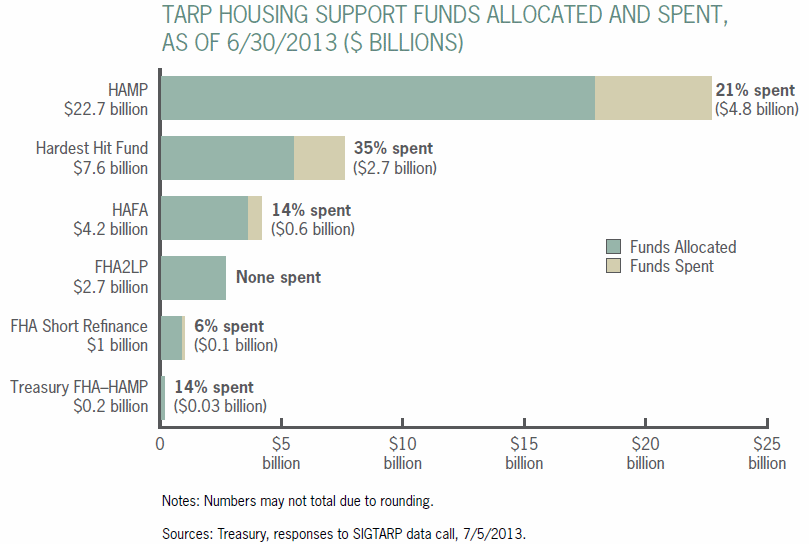Among topics covered in a report from the Special Inspector General for the Troubled Asset Relief Program (SIGTARP) issued today was a critical summary of the Home Affordable Modification Program (HAMP). SIGTARP said that nearly half of the mortgages that were modified in 2009 under the program have defaulted. However, at the program has matured, so has the default rate which has improved steadily over the life of the program.
HAMP was launched by the Obama Administration in April of 2009 and had its first permanent modifications in place, just over 5,000 of them, in the third quarter of that year. Of that first batch 2,345 have defaulted, the highest default rate across all quarters. Even the 30,000 modifications put in place in Q4 of 2009 are running a lower rate with 12,489 o 41.5 percent of the mortgages redefaulting. Modifications put in place in 2010 have a default rate of 28.1 percent.
While the 2009 vintage of modifications are the only ones that have aged for more than three years, it is clear from SIGTARP's data that the longer a modification is in place the higher the default rate and the report urged HAMP to develop better protocols to make mortgages more sustainable. Still, the pattern of default at earlier periods show that the later vintages are performing better than the headline numbers indicate.
For example, as of April 30, eight groups of modifications had aged for 24 months. Modifications put in place during the third and fourth quarters of 2009 had default rates at that point of 33.3 percent and 28.2 percent respectively while those originated in the first two quarters of 2011 averaged about 25 percent. At twelve months the oldest 2009 modifications were defaulting at 20.5 percent and 15.2 percent; the newest originations to reach that benchmark, modified in Q1 and Q2 of 2012 had default rates of 10.7 percent and 11.2 percent.
SIGTARP says that about 306,000 modified mortgages have defaulted over the life of the program; 969,870 loans have received permanent modifications since the program began.
SIGTARP also points out that only 22 percent of the $38.5 billion Treasury has allocated to housing support programs (which was reduced from an original commitment of $45.6 billion) has been expended. As of the end of June, $8.6 billion had been spent, $1.3 billion of that in the quarter then ending.
The low level of funds expended is relatively consistent across all programs operated under the umbrella of the Making Home Affordable (MHA) programs except for the Hardest Hit Fund and some of the amount reported as spent there is actually cash-on-hand or paid for administrative expenses at state housing finance agencies participating in the program.

At the end of June Treasury had active agreements with 93 servicers, down from 145 that had agreed to participate in MHA programs as of October 2010. Of the $29.9 billion obligated to participating servicers only 20 percent or $5.8 billion has been spent.







